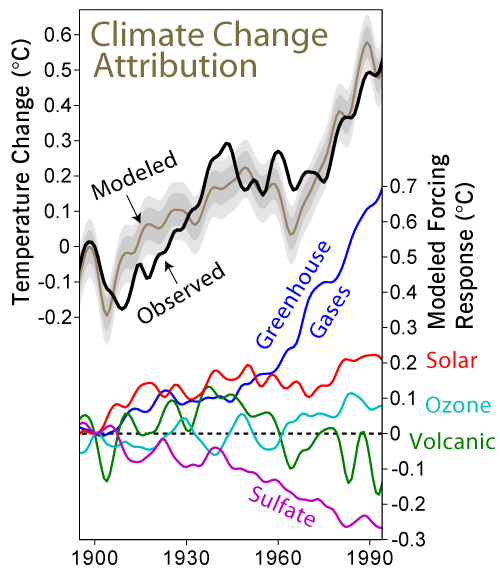Estimating climate sensitivity from 3 million years ago
Posted on 9 May 2010 by John Cook
A key question in climate science is climate sensitivity. If the amount of CO2 in the atmosphere is doubled, the change in global temperature without feedbacks would be around 1°C. However, a number of feedbacks do occur - water vapour, snow albedo, sea-ice albedo and clouds. These respond relatively quickly, over a time-frame of years to decades, and are called "fast feedbacks". Modelling all the individual feedbacks can be problematic. However, we can empirically sidestep all this by using paleoclimate data to calculate the net response from fast feedbacks. A number of studies looking at various periods of Earth's past converge on a climate sensitivity of around 3°C (Knutti & Hegerl 2008). This means any initial warming is further amplified by positive feedback.
A new paper Earth system sensitivity inferred from Pliocene modelling and data (Lunt 2010) looks further into climate sensitivity as determined from the past. It examines the mid-Pliocene warm period,about 3.3 to 3 million years ago. This period is useful because CO2 levels and temperature were higher than pre-industrial conditions, giving us an insight into how climate responds when it's already warm. At this time, the main external forcing driving climate was tectonic changes in mountain ranges which led to changes in atmospheric CO2 (driven by both tectonic-related emissions and weathering).
What they find is the temperature response to changes in CO2 is 30 to 50% greater than the response based on fast feedbacks. This is due to other feedbacks operating over greater timescales (there is still uncertainty over the timescales involved, from hundreds to thousands of years). These slow feedbacks include changes in dust and other aerosols, vegetation, ice sheets and ocean circulation. This is confirmed by the geological record which records changes to ice sheets and vegetation over this period.
This means climate may be more sensitive to carbon dioxide than previously thought. On top of the fast feedbacks that cause the climate sensitivity of 3°C, additional slow feedbacks will add another 1 to 1.5°C warming. This result is confirmed by another recent paper also studying the Pliocene (Pagani 2010). This higher sensitivity should be taken into account when targets are set for limiting greenhouse gas emissions.































 Arguments
Arguments
























 0
0  0
0 How does "about 0.027W/m2" stack up, compared to additional C02?
Please, enough on this. It's cooked.
How does "about 0.027W/m2" stack up, compared to additional C02?
Please, enough on this. It's cooked.








Comments